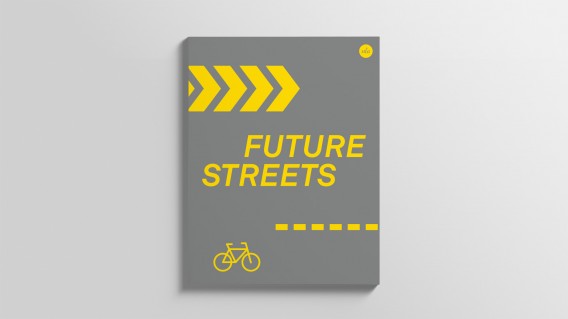















January 01, 2020 | permalink

New London Architecture – a museum of sorts and think-tank concerned with the urban realm of London – has published a report to coincide with its current exhibit on “Future Streets.” I’m grateful to be one of the many smart people consulted as part of the research, and gratified to see a few of my arguments made it into the final draft. To save you the time of searching, I’ve cut-and-pasted them below. The first concerns my long-standing worries ride-hailing will cannibalize transit:
Perhaps the most concerning threat Uber poses is its potential to undercut public transport in London. Some early research from the US suggests that TNCs are moving trips away from public transport, walking and cycling to rideshare services.20 However, another study conducted in London showed that Uber was actually complementing the introduction of the Night Tube. This was on the basis that more Uber trips were being taken from tube stations during ‘Night Tube’ hours, indicating that instead of taking a cab home the whole way, people were now using the Night Tube for most of the journey, and then transferring to an Uber for the last mile.
However, the recent IPO released by Uber states in no uncertain terms that they see public transport as a key competitor and that public transport riders are a key part of the market they seek to win over. Greg Lindsay, director of applied research, NewCities, argues that this should come as no surprise, given that TNCs such as Uber are only profitable in highly dense urban contexts such as central London. He argues that in lower density areas Uber still has to highly subsidise all journeys.
The second involves fears of “privatizing the streets:”
Even if road pricing is effectively implemented for CAVs, Greg Lindsay argues that it potentially puts in motion a dangerous precedent in which every inch of street space is progressively adopted into a market system for the pricing of its use. It is contended that such a model may lead to the unintended consequences of the complete privatisation of all street space in the city. This would contradict the idea that the street is the most radically democratic of all spaces in the city. Moreover, Greg Lindsay notes that it may lead to situations where only companies with greater purchasing power are able to afford the cost of operating on the streets, thus creating a monopoly of service. This might mean that one ridesharing company becomes entirely dominant and therefore able to set the price of rides as they wish.
You can download the entire report here.

» Folllow me on Twitter.
» Email me.
» See upcoming events.

Greg Lindsay is a generalist, urbanist, futurist, and speaker. He is a non-resident senior fellow of the Arizona State University Threatcasting Lab, a non-resident senior fellow of MIT’s Future Urban Collectives Lab, and a non-resident senior fellow of the Atlantic Council’s Scowcroft Strategy Initiative. He was the founding chief communications officer of Climate Alpha and remains a senior advisor. Previously, he was an urban tech fellow at Cornell Tech’s Jacobs Institute, where he explored the implications of AI and augmented reality at urban scale.

January 31, 2024
Unfrozen: Domo Arigatou, “Mike 2.0”
January 22, 2024
The Future of Generative AI in Architecture, Engineering, and Construction
January 18, 2024
The Promise and Perils of the Augmented City
January 13, 2024
Henley & Partners: Generative AI, Human Labor, and Mobility

----- | January 22, 2024
The Future of Generative AI in Architecture, Engineering, and Construction
----- | January 1, 2024
----- | August 3, 2023
CityLab | June 12, 2023
Augmented Reality Is Coming for Cities
CityLab | April 25, 2023
The Line Is Blurring Between Remote Workers and Tourists
CityLab | December 7, 2021
The Dark Side of 15-Minute Grocery Delivery
Fast Company | June 2021
Why the Great Lakes need to be the center of our climate strategy
Fast Company | March 2020
How to design a smart city that’s built on empowerment–not corporate surveillance
URBAN-X | December 2019
CityLab | December 10, 2018
The State of Play: Connected Mobility in San Francisco, Boston, and Detroit
Harvard Business Review | September 24, 2018
Why Companies Are Creating Their Own Coworking Spaces
CityLab | July 2018
The State of Play: Connected Mobility + U.S. Cities
Medium | May 1, 2017
Fast Company | January 19, 2017
The Collaboration Software That’s Rejuvenating The Young Global Leaders Of Davos
The Guardian | January 13, 2017
What If Uber Kills Public Transport Instead of Cars
Backchannel | January 4, 2017
The Office of the Future Is… an Office
New Cities Foundation | October 2016
Now Arriving: A Connected Mobility Roadmap for Public Transport
Inc. | October 2016
Why Every Business Should Start in a Co-Working Space
Popular Mechanics | May 11, 2016
Can the World’s Worst Traffic Problem Be Solved?
The New Republic | January/February 2016